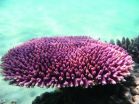(Press-News.org) By using brightly hued dyes, George Mason University researchers discovered an innovative way to reveal where proteins touch each other, possibly leading to new treatments for cancer, arthritis, heart disease and even lung disease.
George Mason researchers unraveled the mystery of deciphering the contact points where proteins touch each other. "One protein interlocks with another protein like adjacent pieces in a jigsaw puzzle, and this sends a signal down the line to the next protein," says Lance Liotta, co-director of the Mason-based Center for Applied Proteomics and Molecular Medicine.
The mystery is in the "hot spots" where proteins interlock. Researchers know which proteins connect but couldn't pinpoint where it happens. Until now, thanks to Mason's newly published approach.
Dyes—the type used in common copying machines and textiles—are mixed with proteins. The dye paints the proteins everywhere except where the proteins are connected to one another. Then the proteins are disconnected but the dye remains, excluding the blank spot where the proteins were "kissing."
Finding ways to break up interlocking proteins could be used to locate new drug targets, says Virginia "Ginny" Espina, a professor with the center. Pharmaceutical companies could use the Mason-developed process to create drugs that break up the protein-to-protein connection or stop it from happening altogether, she says.
The team tackled a complex interaction of three proteins, called interleukin signaling, that leads to painful inflammatory arthritis and other diseases including inflammatory bowel disease. They created two inhibitors—a peptide and an antibody—that broke up the protein connection in a test tube. "Both inhibitors made these proteins fall apart and they couldn't send out a signal for inflammation," Liotta says.
Until the Mason-led advancement, researchers have struggled to figure out where proteins make contact. "It seems very easy but, in reality, it's not," says Alessandra Luchini, a professor with the proteomics center who created the experimental method.
Researchers have used computer modeling and crystalized proteins but couldn't show proteins making contact in real time, she says. "Using this tool, we now can study the protein exactly as it's found in nature," Luchini says.
And as it turns out, the printer dyes not only paint a pretty picture, but they are the perfect size to color the proteins—and they stick. The Mason team is using blue, red, purple and orange dyes.
INFORMATION:
Nature Communications published the study on July 22, 2014. A link can be found here: http://www.nature.com/ncomms/2014/140722/ncomms5413/full/ncomms5413.html
This research was funded by a grant from the National Institutes of Health Innovative Molecular Analysis Technologies Program.
About George Mason University
George Mason University is Virginia's largest public research university. Located near Washington, D.C., Mason enrolls more than 33,000 students from 130 countries and all 50 states. Mason has grown rapidly over the past half-century and is recognized for its innovation and entrepreneurship, remarkable diversity, and commitment to accessibility. Mason is also one of the best values in higher education, producing graduates who lead all Virginia schools with the highest annual salaries. http://www.gmu.edu
Researchers unlock the protein puzzle
George Mason University researchers use dyes to paint new picture of disease
2014-07-23
ELSE PRESS RELEASES FROM THIS DATE:
A new approach in the search for extraterrestrial intelligence: targeting alien polluters
2014-07-23
Humanity is on the threshold of being able to detect signs of alien life on other worlds. By studying exoplanet atmospheres, we can look for gases like oxygen and methane that only coexist if replenished by life. But those gases come from simple life forms like microbes. What about advanced civilizations? Would they leave any detectable signs?
They might, if they spew industrial pollution into the atmosphere. New research by theorists at the Harvard-Smithsonian Center for Astrophysics (CfA) shows that we could spot the fingerprints of certain pollutants under ideal conditions. ...
An increase in temperature by 2050 may be advantageous to the growth of forage plants
2014-07-23
A 2°C increase in temperature around the world by 2050, according to one of the scenarios predicted by the Intergovernmental Panel on Climate Change (IPCC), may be advantageous to the physiology and the biochemical and biophysical processes involved in the growth of forage plants such as Stylosanthes capitata Vogel, a legume utilized for livestock grazing in tropical countries such as Brazil.
The conclusion is from a study carried out by researchers in the Department of Biology at the Ribeirão Preto Faculty of Philosophy, Sciences and Languages and Literature at the University ...
New method for reducing tumorigenicity in induced pluripotent stem-cell based therapies
2014-07-23
New Rochelle, NY -- The potential for clinical use of induced pluripotent stem cell (iPSC) technology for transplant-based therapeutic strategies has previously been hindered by the risk of dysregulated cell growth, specifically the development of tumors. The ability to use etoposide treatment to halt teratoma formation in iPSCs for the treatment of heart disease, specifically acute myocardial infarction, is demonstrated in an article in Stem Cells and Development, a peer-reviewed journal from Mary Ann Liebert, Inc., publishers. The article is available on the Stem Cells ...
Research charts the ecological impact of microbial respiration in the oxygen-starved ocean
2014-07-23
A sulfur-oxidizing bacterial group called SUP05 will play an increasingly important role in carbon and nutrient cycling in the world's oceans as oxygen minimum zones expand, according to research published this week in the Proceedings of the National Academy of Sciences.
University of British Columbia researchers plumbed the depth of a seasonally anoxic fjord, Canada's Saanich Inlet, to chart how microbial community metabolism changes as oxygen minimum zones form.
"Our study paints a very detailed picture of how SUP05 — a bacterial group related to gill symbionts of ...
Calcification in changing oceans explored in special issue of The Biological Bulletin
2014-07-23
WOODS HOLE, MA -- What do mollusks, starfish, and corals have in common? Aside from their shared marine habitat, they are all calcifiers—organisms that use calcium from their environment to create hard carbonate skeletons and shells for stability and protection.
The July issue of The Biological Bulletin, published by the Marine Biological Laboratory, addresses the challenges faced by these species as ocean composition changes worldwide.
As atmospheric carbon dioxide rises, the world's oceans are becoming warmer and more acidic. This impact of global climate change threatens ...
Somatosensory stimulation inhibits excitability of pyramidal cells in rat hippocampal CA1
2014-07-23
The hippocampal region of the brain is important for encoding environment inputs and memory formation. However, the underlying mechanisms are unclear. Dr. Zhouyan Feng and co-workers from Zhejiang University, China monitored the activity of hippocampal neurons in rats using microelectrode arrays, and explored the mechanisms underlying the neuronal responses. Somatosensory stimulation, in the form of tail clamping, changed local field potentials into theta rhythm-dominated waveforms, decreased the spike firing of pyramidal cells, and increased interneuron firing. In addition, ...
Unbreak my heart
2014-07-23
This news release is available in German.
Researchers of the Max Planck Institute of Molecular Cell Biology and Genetics in Dresden report how they managed to capture detailed three-dimensional images of cardiac dynamics in zebrafish. The novel approach: They combine high-speed Selective Plane Illumination Microscopy (SPIM) and clever image processing to reconstruct multi-view movie stacks of the beating heart. Furthermore, they have developed a method of generating high-resolution static reconstructions of the zebrafish's heart: the Dresden research team used optogenetics ...
Australian researchers pioneer a 'Google street view' of galaxies
2014-07-23
A new home-grown instrument based on bundles of optical fibres is giving Australian astronomers the first 'Google street view' of the cosmos — incredibly detailed views of huge numbers of galaxies.
Developed by researchers at the University of Sydney and the Australian Astronomical Observatory, the optical-fibre bundles can sample the light from up to 60 parts of a galaxy, for a dozen galaxies at a time.
By analysing the light's spectrum astronomers can learn how gas and stars move within each galaxy, where the young stars are forming and where the old stars live. This ...
K computer runs largest ever ensemble simulation of global weather
2014-07-23
Ensemble forecasting is a key part of weather forecasting today. Computers typically run multiple simulations, called ensembles, using slightly different initial conditions or assumptions, and then analyze them together to try to improve forecasts. Now, using Japan's flagship 10-petaFLOPS K computer, researchers from the RIKEN Advanced Institute for Computational Science (AICS) have succeeded in running 10,240 parallel simulations of global weather, the largest number ever performed, using data assimilation to reduce the range of uncertainties.
The assimilation of the ...
Physical work environment in hospitals affects nurses' job satisfaction
2014-07-23
Job satisfaction is an important predictor of registered nurses' (RNs) job turnover, patient satisfaction, and nurse-sensitive patient outcomes (including pressure ulcers and falls), which can result in higher health care costs and penalties for hospitals that receive Medicare and Medicaid payments. Numerous studies have been conducted to assess nurses' job satisfaction, asking about nurse-physician relationships, opportunities for promotion, autonomy, and similar issues, but very few have addressed the impact of the physical work environment on RNs' job satisfaction.
Now, ...
LAST 30 PRESS RELEASES:
The Lundquist Institute receives $2.6 million grant from U.S. Army Medical Research Acquisition Activity to develop wearable biosensors
Understanding the cellular mechanisms of obesity-induced inflammation and metabolic dysfunction
Study highlights increased risk of second cancers among breast cancer survivors
International DNA Day launch for Hong Kong’s Moonshot for Biology
New scientific resources map food components to improve human and environmental health
Mass General Brigham research identifies pitfalls and opportunities for generative artificial intelligence in patient messaging systems
Opioids during pregnancy not linked to substantially increased risk of psychiatric disorders in children
Universities and schools urged to ban alcohol industry-backed health advice
From Uber ratings to credit scores: What’s lost in a society that counts and sorts everything?
Political ‘color’ affects pollution control spending in the US
Managing meandering waterways in a changing world
Expert sounds alarm as mosquito-borne diseases becoming a global phenomenon in a warmer more populated world
Climate change is multiplying the threat caused by antimicrobial resistance
UK/German study - COVID-19 vaccine effectiveness and fewer common side-effects most important factors in whether adults choose to get vaccinated
New ultraviolet light air disinfection technology could help protect against healthcare infections and even the next pandemic
Major genetic meta-analysis reveals how antibiotic resistance in babies varies according to mode of birth, prematurity, and where they live
Q&A: How TikTok’s ‘black box’ algorithm and design shape user behavior
American Academy of Arts and Sciences elects three NYU faculty as 2024 fellows
A closed-loop drug-delivery system could improve chemotherapy
MIT scientists tune the entanglement structure in an array of qubits
Geologists discover rocks with the oldest evidence yet of Earth’s magnetic field
It’s easier now to treat opioid addiction with medication -- but use has changed little
Researchers publish final results of key clinical trial for gene therapy for sickle cell disease
Identifying proteins causally related to COVID-19, healthspan and lifespan
New study reveals how AI can enhance flexibility, efficiency for customer service centers
UT School of Natural Resources team receives grant to remove ‘forever chemicals’ from water
Sweet potato quality analysis is enhanced with hyperspectral imaging and AI
Use of acid reflux drugs linked to higher risk of migraine
For immigrants to Canada, risk of MS increases with proportion of life spent there
Targeted use of enfortumab vedotin for the treatment of advanced urothelial carcinoma
[Press-News.org] Researchers unlock the protein puzzleGeorge Mason University researchers use dyes to paint new picture of disease




